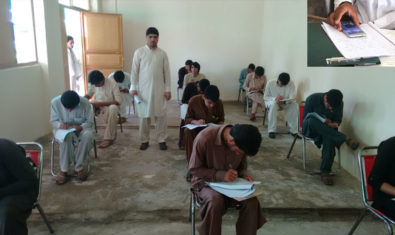A new global study suggests widening academic gaps between rich and poor children has less to do with attitude or work ethic than socioeconomic factors.
The COVID pandemic hit children’s education hard. Mathematics, reading and science performance declined significantly between 2018-2022 and the trend is worldwide.
Research suggests that disadvantaged children have suffered more due to socioeconomic factors than others: Gaps in academic performance are widening along economic lines — between kids from rich backgrounds and those from poor backgrounds. Researchers say this is a trend around the world, but that it’s been seen particularly in richer countries, such as the US and Germany.
Now, the results from a new global study aim to explain why this is happening.
“There is a pervasive idea that low income students lack some of the social and emotional skills, like growth mindset or perseverance, or that they have a negative attitude towards schooling. And that [that] is part of the reason why they have lower levels of performance,” said Rob Gruijters, a lead author of the study based at the University of Cambridge, UK.
“But there isn’t a whole lot of empirical evidence about the idea,” Gruijters told DW.
The study, published in the journal Sociology of Education, included data from 74 countries. It argues that initiatives to develop self-awareness and personal skills in children are unlikely to reduce educational inequality. And that idea is finding support from other researchers in the field.
“This article shows how educational success is not a question of mindset or attitude. It contributes to research showing us that the source of social and educational inequality is poverty,” said Antoanetta Potsi, an education specialist at Bielefeld University, Germany. Potsi was not involved in the new study.
What causes academic gaps between rich and poor kids?
In the US, policymakershave focused on the idea that lower income children can be taught “work ethic” and “character development” as a key strategy for narrowing achievement gaps.
The study uses data from the 2018 Programme for International Student Assessment (PISA). PISA is a standardized test given to 15-year-olds around the world to assess and compare performance of students in mathematics, reading, and science.
PISA also contains psychological measures, including growth mindset, self-efficacy, and work mastery. The study analyzed the role of these socio-emotional skills in learning inequalities.
“We found that social and emotional skills only explain the gap in learning outcomes between advantaged and disadvantaged children by 9%,” said Gruijters.
“The interpretation here is that if we could create the same levels of social and emotional skills between higher and low income students, it would reduce their achievement gap only by a tiny amount,” he added.
Teaching ‘work ethic’ unlikely to impact test scores
The study authors argue that initiatives to promote social and emotional learning are unlikely to reduce educational inequality.
“Educational inequality cannot be solved through social and emotional learning. The idea that children can overcome structural disadvantage by cultivating a growth mindset and a positive work ethic overlooks the real constraints many disadvantaged students face, and risks blaming them for their own misfortune,” said Gruijters.
Potsi said the real issue here is lack of learning tools and opportunities for many poorer children in the home environment.
“This study shows us we’ve been moving in the wrong direction from a policy perspective. Addressing injustice in the education system [with social and emotional learning] is completely false and misleading. What we really need to do is combat poverty to create equal opportunities,” Potsi told DW.
This issue became more apparent during the COVID-19 pandemic, when children from disadvantaged backgrounds had less access to computers or books at home during times when schools were closed.
A UK-based survey, for instance, found that a third of students in deprived areas did not have adequate access to home learning tools during the pandemic.
What can Govts do to bridge the achievement gap in education?
Gruijters said educational systems need to be restructured.
“A lot of learning inequalities emerge even before children enter school. When children are three to five years old, we see substantial gaps in their skills and abilities. If you had very high quality preschool that’s attended by all children, that could potentially tackle inequalities at a relatively early age,” he said.
Another idea, said Gruijters, is to redistribute the best teachers and resources to schools in more deprived areas. But that is not happening.
“Instead, what we see in a lot of countries is the other way round, with schools attended by middle and upper class children with the most resources. On top of that you have high income parents paying for private education or extracurricular tutoring. Obviously, that’s going to make a big difference,” he said.























Good article
was published by DW an external source,thats y
lol who did the survey? rich or poor?